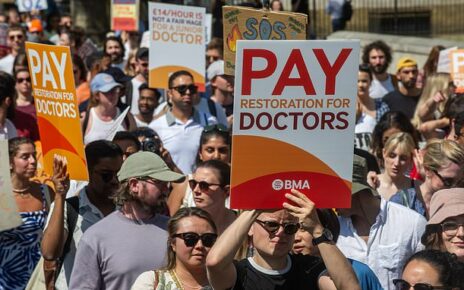Today, on September 11th, many will be mourning the tragic loss of life during the attack on the World Trade Center in 2001. However, we must also remember the tragedies that subsequently occurred during the horrific wars in Iraq and Afghanistan. And importantly, we can never forget the loss of constitutional rights and the rise of the U.S. surveillance state that has targeted non-white people in our post 9/11 world.
The surveillance state has existed since the inception of the United States. During slavery, Black Muslims were policed and forced to convert to Christianity, for fear that Muslim slaves were more likely to protest or revolt against their masters. As slave patrols morphed into police departments, so too did surveillance tactics adapt and change, particularly in the aftermath of 9/11. However, the targets of surveillance remain the same: those who threaten the white supremacist order that the United States was founded on.
One of the most infamous examples of surveillance in history was the FBI’s COINTELPRO program. COINTELPRO was a counterintelligence program with the stated goal of disrupting the Communist Party’s activity in the United States. Its legacy is long-lasting, and it cemented—in the mind of the state—the idea that political activism was tantamount to criminal activity. The agency, through the directives of this initiative, used surveillance to psychologically torment, blackmail, charge, prosecute, and smear activists—most of whom were Black. The mission of the US government was clear: destroy any social movement that threatened white supremacy, by any means necessary. Though the horrors carried out during COINTELPRO were far-reaching and cruel, the government did not yet have the tech to implement the levels of surveillance we are contending with in more recent years.
In the immediate aftermath of 9/11, the Bush Administration pushed the Patriot Act through Congress, taking advantage of the nation’s newly reignited fear of Muslims. The new legislation was a devastating blow to the constitutional right to privacy, and according to the ACLU, it “expanded the government’s authority to spy on its own citizens, while simultaneously reducing checks and balances on those powers like judicial oversight, public accountability, and the ability to challenge government searches in court.”
In practice, the state was able to look at records on individual’s activities which were held by third parties and allowed law enforcement to search private property without notice to the owner, among other things. It’s hard to overstate the harm the Patriot Act has caused since its passage—and reauthorization in 2020. But perhaps the worst effect of the Patriot Act was its creation of the crime of so-called domestic terrorism, which paved the way for the government to frame protesters as terrorists, particularly those who are Black, Indigenous, Latinx, or belong to other racialized communities. They’ve taken every opportunity since its passage to do so.
The United States has continued to codify surveillance since 2001, particularly with the Obama-era Countering Violent Extremism (CVE) program and Trump’s rebranded Targeted Violence and Terrorism Prevention (TVTP) initiative. CVE was piloted in many cities, including Minneapolis, where there is a large concentration of Somali Muslims. In Minneapolis, that surveillance was so insidious that one of the partners for CVE was Minneapolis Public Schools, meaning even children were subjected to the targeting and profiling emblematic of the program. Though the FBI admits it can be difficult or impossible to predict someone’s radicalization, the government continues to fund these programs. And thus, the legacies of COINTELPRO and the Patriot Act are upheld, as law enforcement expands their surveillance efforts to the same ends: preventing community building, squashing rebellion, and snuffing out protest.
Quelling protest is a huge priority of the surveillance state. Freedom of Information Act (FOIA) requests from 2015 revealed that the Department of Homeland Security had been monitoring the Black Lives Matter movement since the protests in Ferguson in 2014. According to the report by The Intercept, “the department frequently collects information, including location data, on Black Lives Matter activities from public social media accounts, including on Facebook, Twitter, and Vine, even for events expected to be peaceful.” In 2018, highly redacted FBI emails and intelligence reports showed that the bureau was gathering intelligence on BLM protests, profiling, and keeping track of activists. They denied that they were surveilling people on the basis of exercising their First Amendment right to protest, but the evidence suggests otherwise.
Tech has made this type of surveillance expand to previously unimaginable levels, all framed as a state’s defense against domestic terrorism. Targeted communities are surveilled through every avenue imaginable. Law enforcement used livestreams, comments, and posted photos to identify and arrest protesters during the 2020 uprisings, oftentimes using facial recognition or statewide photo databases. In many cases, they posted pictures of suspects to their own social media channels to solicit help from the public in identifying them. These sites are increasingly being used to charge people with crimes, from cyber harassment to illegal abortions, after the fall of Roe. Technological innovations and tech-based reforms like facial recognition, bodycam footage, and license plate readers lead to the surveillance state’s web growing larger. With this tech, its ability to trap protesters who express dissenting views becomes more efficient. And corporations like Amazon help the government, willingly handing over footage from their Ring cameras.
As the surveillance state expands, so does the government’s ability to oppress marginalized groups in the United States. As such, it is our duty to consider the ramifications of surveillance as we reflect on our post-9/11 world—and to resist its continued expansion.
Source: Read Full Article

